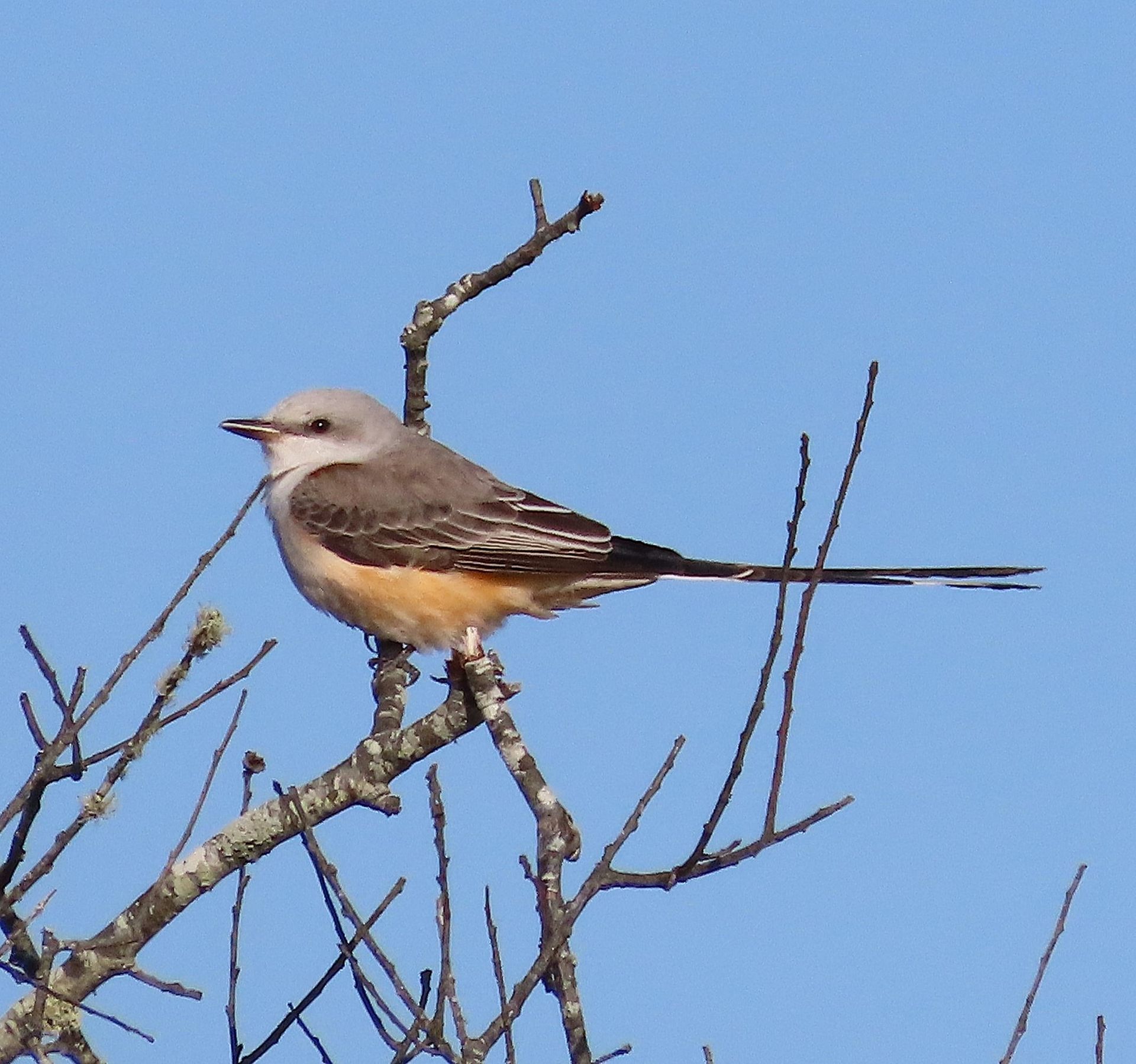MMA News

[1855] On the 12 th [December] at 8 o’clock, I found a comet in Cetus. It is probably that seen by Bruhns in Berlin on Nov. 12. It is round and bright and moved so rapidly that in an hour I was certain of its change of place. From 8 to 10 ½ it had moved about half the diameter of my field of view. I tho’t it varied in its light but of this I am not quite certain, as I at times changed from one instrument to another, and I cannot be certain that my eye was not somewhat affected by the size of different powers, so as to affect my judgement. I would give a good deal for it to be my own possession, because it would convince me that I was not declining in vigor. This comet, unlike her won comet of October 1, 1847, is fairly fast moving – it would take many calculations and much time for her comet to illustrate its movement – beyond just the appearance of its “tail.” Maria had made earlier comments in the month about if being a hard year – the hardest of her life. The loss of friends, her mother’s illness. But this, with other matters, buoyed her spirit and she talked about her “blessings.” This comet was one seen by Maria only eight years after her comet discovery so it seems interesting that she feels she is slipping and not as “vigorous” – she is only thirty-seven years old at this date. JNLF

Another re-blog. I came across this recently while looking through my computer files. I want to re-blog it in memory of Jean Hughes, an incredibly gifted islander, who was directly influential in the lives of so many island children and those in need. She was the Coffin School Trustee’s President for many years and I had the honor to serve as a trustee under her. She passed away in the summer of 2025. Jeanie loaned me this from her family collections as she thought I would enjoy it. She knew me better than I thought she did. With love. 1830s Chinese silk to be exact. It literally floated into my lap as I sat reading a letter. A letter from a young Nantucket girl to her grandparents. A young girl who just several years before had moved from tiny Nantucket Island to San Francisco with her mother to join her father. He had moved for better work and a better life. Nantucket was in an economic decline. Reading this treasure trove of letters – loaned to me by a friend who is a descendant of these people I mention – was like spying on them. Now, when I read Mitchell family letters and writing it is slightly different for me. Having worked in the Mitchell House for so long, I feel like they are a part of my family. This batch of letters was different however. I felt like they know I read their letters – as if they were looking over my shoulder or sitting on the other side of the room aghast. I felt like they thought no one ever would – or at the very least an outsider – read this correspondence. The worse letter one was the son writing to his mother upon receipt of her letter telling him of his father’s death. That was hard. Made harder because he thought his father was fine – he was as of the last letter a month or two before. Made harder as I lost my own Father a little over a year ago. I knew how he felt – but cannot imagine receiving a letter that is about a month old telling one of such horrible news. He had not seen his father in several years. I could speak to my Father, visited him monthly, and was there with him. That was not an easy letter to read. The silk fabric piece is quite beautiful – and still pristine – as if it was just folded into the letter yesterday. She wanted to share with her grandparents the dress that her cousin had brought to her directly from Hong Kong. A cousin, who was likely pregnant – or “sick” as was written but it was obvious what “sick” meant (yes, pregnancy was looked at as an illness in a way – and there were high rates of infant and mother mortality during and immediately following birth). The cousin had travelled back and forth to Hong Kong on the China Trade with her husband it seems but due to the pregnancy had to be put off with family or others until the baby was born. This was a common practice for the wives of whale captains who might go to sea with their husbands. They were put off with other whaling families or missionaries in far off ports so that they could have their baby where others could help. Sometimes they were put off months in advance. And, did you know that Nantucket whale wives were the FIRST to go to sea with their captains husbands? They set the trend – after all, we were the whaling capital of the world. At least, until we lost that title for multiple reasons. I digress. The other piece that leads one to realize that money was to be had – at least for the cousin – is that she didn’t bring fabric – she brought the dress already made in Hong Kong. Yes, it would have been less costly there than in the United States but it shows there was extra money for spending. And, there was enough excess fabric inside the dress for this young girl to cut off a piece of it and send it to her grandparents. Making them feel as if they were a part of her daily life – and making her feel that way too. So far from home. On the other side of the continent with Nantucket Sound in the midst, to boot. JNLF
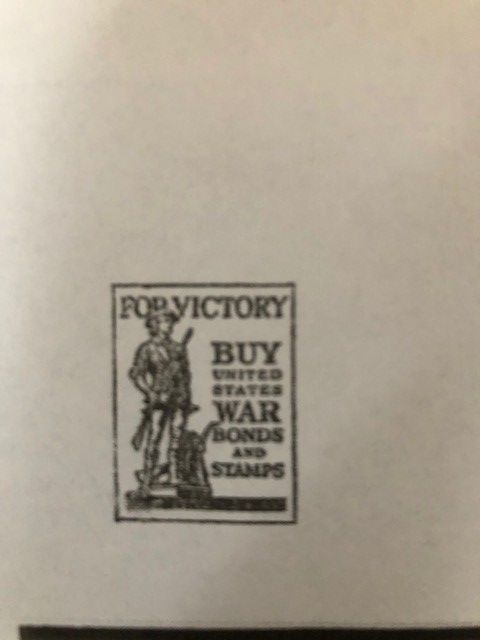
A past blog that I forgot I had written when I came across the letter written about below. Once I realized I had already written a blog about it, I decided it was worth re-blogging. Over Christmas, a neighbor of my Mother’s gave her a copy of something she came across while cleaning things up in her house. She thought my Mother would enjoy it and by the same token, my Mother thought that I would. Her note with it stated it proved she was as, “old as dirt.” She isn’t old as dirt. Believe me. The letter she had copied was from the War Production Board and dated December 16, 1942. It was, “written at the request of President Roosevelt,” who wanted to thank this young girl for her donation of a rubber tire. This was not any old rubber tire you see. It was a pure rubber tire – very much needed for the war effort – from one of her toy airplanes and measured not more than half an inch or so in diameter. This young girl was distressed that everyone else, including in her family, was assisting in the war effort and that she wasn’t. So when she discovered the tire was rubber, she asked her mother to send it to Washington, DC. Which, obviously, her mother did do. What does this have to do with Maria Mitchell you wonder? Well, it makes me think of collections and saving things. You have your own collections and archives at home – your family papers and photographs, your books (aka special collection books). These are valuable to your family and its history. They help you see what and who came before you and how your family became a family. What they endured. How they got to where they did and how where they came from helped, in part, to get you to where you are today. And then, these papers and books are important for the larger community. We learn from our past and our collective past – and these items help us do that. Scores of researchers use Maria Mitchell’s papers and those of her family every year. Not everyone is doing research on the family – they can be doing research on astronomy or some science-related matter, someone whom Maria or her family knew. The possibilities are endless. So, from this little letter, I know a young girl in Connecticut contributed to the war effort and what she gave. I know that rubber (not that I didn’t already but you get the idea) was important to the war effort in some way. I also know that many people contributed to the war effort and this was just one simple way to do it. I know she had a toy that had rubber components. And as a young girl in 1942, she was playing with toy airplanes. And I know that the war effort was all consuming to the point that a small child wanted to make sure she found a way to help too while seeing her family members helping. Your paper is important. Always find a venue for these items if you no longer want them. They will help us to better understand our world – past and present. JNLF P.S. Remember that every donation, every gift to someone in need, matters. No matter how small it is – or you think it is.

Nov. 15, 1876. Congress. The Woman’s congress met in Philadelphia. The papers were numerous and excellent. Mrs. Howe’s on paternity the most successful. Grace Anne Lewis, ABB [Antoinette Brown Blackwell], Mrs. Diaz [Abby Morton Diaz], Mrs. Perus and others had very good papers. The newspaper treated us very well. The institutions opened their doors to us, the centennials gave us a reception. But – we didn’t have a good time! 1 st . The Hall was a very bad one to speak in, almost no one could be heard. 2 nd . The Women’s committee of Philadelphia led by Mrs. Bartol, attempted to control us . . . Several women protested via passed note to Maria Mitchell that they did not want to discuss suffrage for women at the Congress. Really? Why were they even there then? Apparently, they were afraid (I can see that). Ultimately, papers were presented and discussed concerning women’s suffrage. They even had people oppose the nomination of Julia Ward Howe as President. A small group of women offered up other nominations with one finally saying that the new president needed to be from the west, implying there was too much northeast representation on the board. Maria was not pleased in the least. Ultimately, Julia Ward Howe became President. JNLF
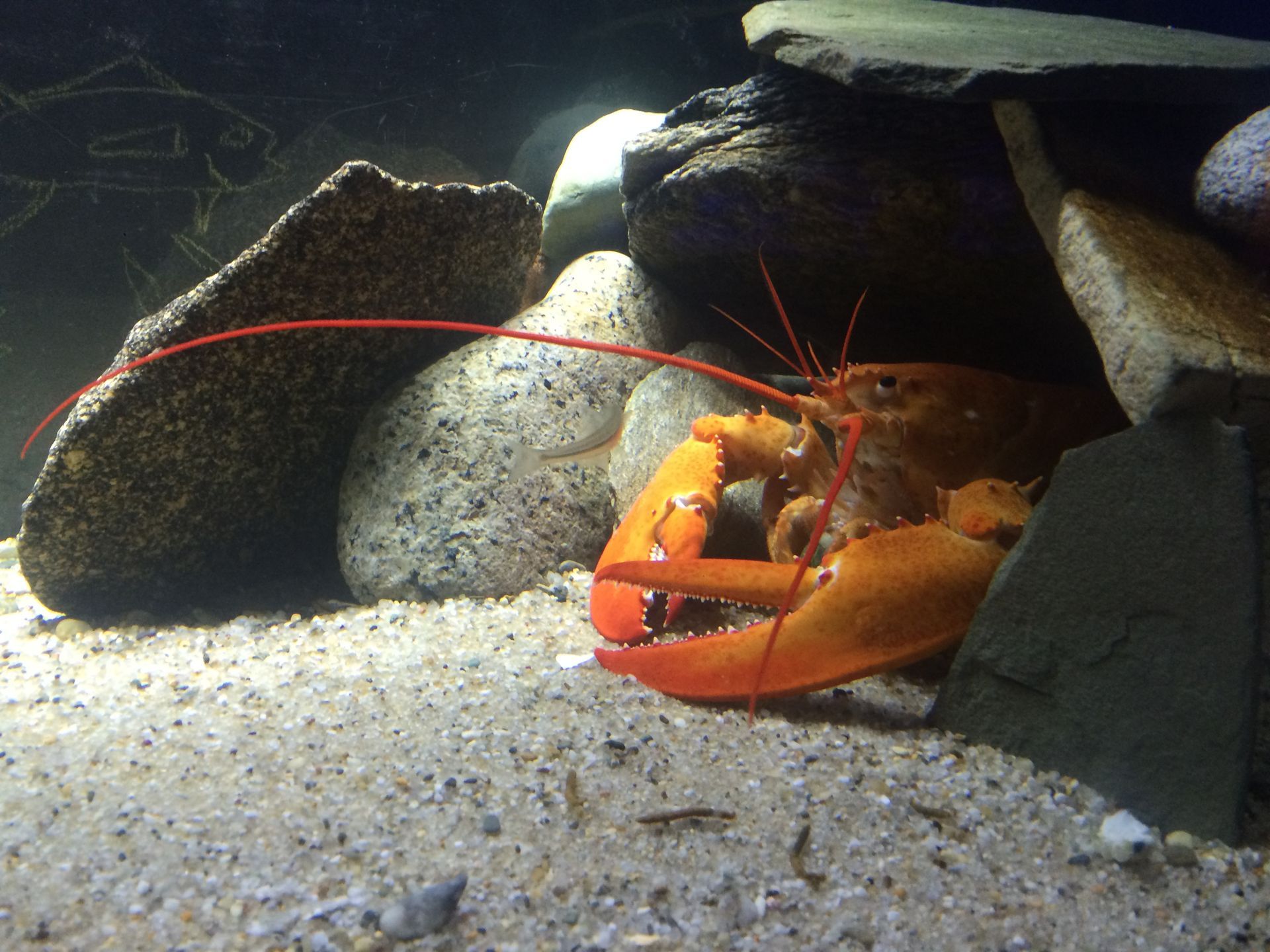
Clementine has finally molted! We at the MMA have been awaiting this for quite some time so I decided to re-post an old blog about Clementine. Well, not quite. But, part of my job is to also take care of all of the MMA properties. So, I headed over to check on one and what cleaning supplies are needed for the summer and for our staff spring clean-up of the site. In one room, some of the animals from the Aquarium over-winter. One of those is “our” lobster, Clementine, so-called because she is orange in color. (Orange lobsters are five times rarer than blue lobsters and only one in ten million lobsters are orange.) She is fairly active and though the hope is that she “sleeps” a bit for the winter, she doesn’t seem to. So, enter curator into room who glances over and hopes the lobster does not “run” to the side of the tank asking to be fed. Yes, she really does that – she has gotten used to people. I always hate it because I feel guilty – I do not feed her because that falls to the Natural Science Department and I do not want to hurt her or her schedule in any way. In any case, “Whew!” She actually seemed quiet at the back of the tank. Maybe she was “sleeping.” I kept moving to the next room and glanced back. Low and behold, she was at the front of the tank waving her claws! Seriously? So I kept moving on – after telling her, “I can’t feed you,” – and she went to the back of the tank again! Another, “Whew!” I decided to text Emily, our Director of Natural Science (at that time), and relay what happened. I get a text back. “You can feed her if you want.” “Really?” I texted back. “What do I give her?” So, Clementine then ran back to the front of the tank when she saw me opening the freezer and taking out the mussels and a shrimp. I got another text from Emily: “Use the forceps to hand them to her.” Well, I wasn’t about to put my hand in there! So, I get the shrimp, put it in the forceps, open the top of the tank and start to put my hand down, and INSTANTLY two HUGE lobster claws come out of the tank and grab not the shrimp but the forceps! I wish I had a picture. I was afraid she was going to take the forceps. And then, I was afraid my hand was going to be her lunch. I could not get her to release the forceps – it was a battle royale though the battle was more on her part because I was afraid I would break her claw! After some twisting of the forceps and tugging, she finally relented, took the shrimp, and began her lunch. Another, “Whew!” I was afraid I was either going to hurt her or I was going to be explaining to my three-year old what happened to Mommy’s hand at work. Veuve Clicquot with that, Clementine? Apparently, someone else knew what transpired with the lobster. As I left the building, a male mallard duck was paddling around in the rather large puddle – if you can call it that – located on the property. We have recently had a large amount of rain. He was laughing (I mean quacking) at me. In all seriousness, I have never met a lobster with so much personality. Yes, personality. Clementine may just have changed my tune on lobster rolls. JNLF
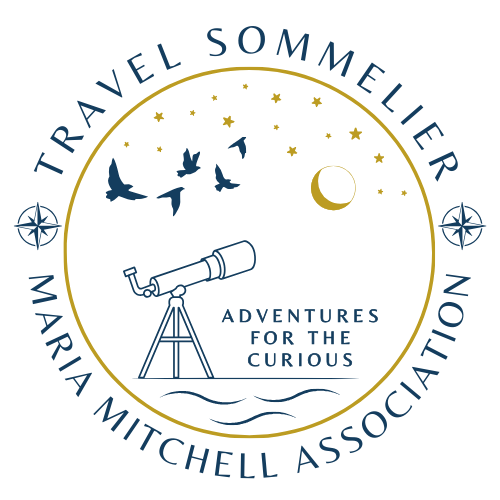
NANTUCKET, MA—The Nantucket Maria Mitchell Association (MMA) welcomes Darren Humphreys, founder and CEO of Travel Sommelier, and Dr. Jackie Milingo, MMA’s Director of Astronomy, for a captivating discussion on the upcoming total solar eclipses in Spain (2026) and Egypt (2027). Learn how Travel Sommelier and the MMA are collaborating to craft unique, curated astro-travel experiences for travelers eager to witness these extraordinary celestial events. This event is free and will be held via Zoom on Wednesday, November 19 from 7 – 8:30pm. During the presentation, Humphreys will share how Travel Sommelier is designing seamless, one-of-a-kind eclipse travel experiences, crafted with precision, passion, and purpose. These itineraries include a week-long journey in northern Spain (2026) featuring Barcelona’s culinary delights and Menorca’s wellness offerings, as well as a trip along Egypt’s Nile River (2027), exploring ancient temples and the storied landscapes of one of the world’s most historic civilizations. The MMA will collaborate on these exclusive trips by providing the guidance and insights of its professional astronomers to enhance the experience and offer expert insights on the celestial events, giving participants an insider’s view of these extraordinary astronomical phenomena. This presentation offers a unique opportunity for travelers, astronomy enthusiasts, and anyone curious about the intersections of culture, history, and the cosmos to learn about once-in-a-lifetime adventures to witness these extraordinary solar eclipses. Darren Humphreys, after a successful career on Wall Street, followed his true calling and founded Travel Sommelier, fueled by a deep-rooted wanderlust and a desire to share the power of meaningful travel. Humphreys strongly believes in having fun along the way and finds gratitude in finding close friendships among his trusted partners and curious clients. Humphreys has explored over ninety countries across every continent and continues to find magic in every destination—immersing himself in new cultures, complex histories, and unforgettable culinary and wine experiences. From introducing travelers to his native South Africa to uncovering hidden gems around the globe, he invites you to see the world through a richer, more personal lens. Dr. Jackie Milingo is an observational astronomer who earned B.S. degrees in Physics and Astronomy from the University of Kansas, and a Ph.D. in Astrophysics from the University of Oklahoma. Her research is currently focused on understanding magnetic activity cycles in sun-like stars through long-term studies of star spots. Dr. Milingo joins the MMA after a year-long AAAS Science and Technology Policy Fellowship at the U.S. National Science Foundation, where she was a Fellow in the Office of Legislative and Public Affairs, as well as the Astronomy Division in the Math and Physical Sciences Directorate. Before her fellowship, she was a professor in the Physics Department at Gettysburg College for over twenty years where her work included mentoring undergraduate research students. Dr. Milingo joined the staff of the MMA in early September after a year-long, worldwide search for a new astronomer. She becomes the eighth MMA Astronomer and Director of the Astronomy Department of the MMA since Margaret Harwood, the MMA’s first astronomer, served from 1916 to 1957. Dr. Milingo has spent her career committed to generating transformative experiential learning opportunities, contributing to public education and outreach, removing barriers for students, and changing the conversation and learning spaces in astronomy, physics, and STEM in general. This event will be held via Zoom. Pre-registration is required. To register for the free, virtual event, use the registration link below: https://us06web.zoom.us/webinar/register/WN_iBdtLfUQRQuPH_Ytbh9u-Q#/registration The Science Speaker Series is generously sponsored by the Maria Mitchell Association’s lead sponsor, Bank of America. The Maria Mitchell Association was founded in 1902 to preserve the legacy of Nantucket native astronomer, naturalist, librarian, and educator, Maria Mitchell. After she discovered a comet in 1847, Mitchell’s international fame led to many achievements and awards, including an appointment as the first professor of astronomy at Vassar College. Maria Mitchell believed in “learning by doing” and today that philosophy is reflected in the MMA’s mission statement, programs, research projects, and other activities. The Maria Mitchell Association operates two observatories, a natural science museum, an aquarium, a research center, and preserves the historic birthplace of Maria Mitchell. A wide variety of science and history-related programming is offered throughout the year for people of all ages. ###
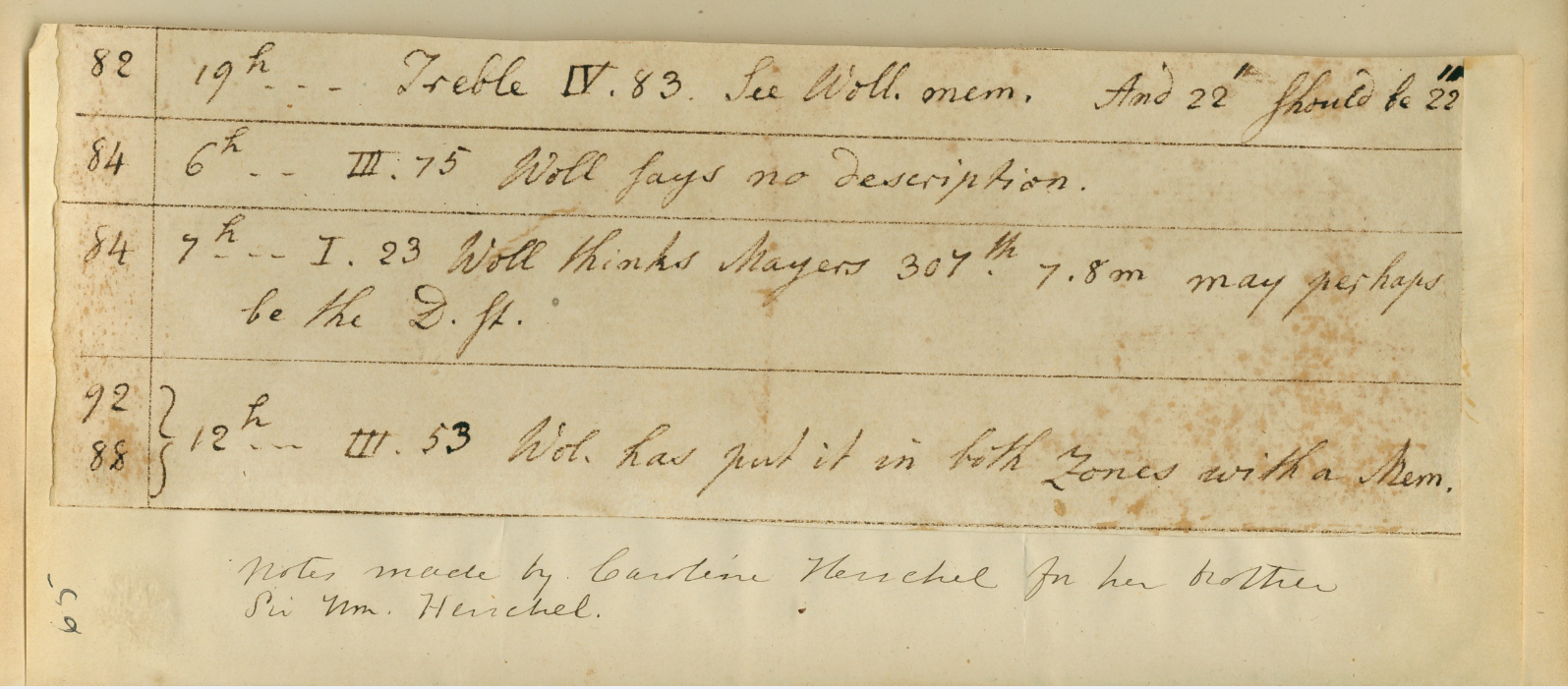
A re-blog from years past. The item you see here is a small piece of what once was. Upon her visit to Europe as a young woman’s chaperone in 1857 –1858, Maria Mitchell visited many of the major observatories of Europe and met many of the movers and shakers in the scientific, art, and literary worlds of the continent. While Caroline Herschel (1750 – 1848) and her brother, Sir William (1738 – 1822), were long dead, Maria was able to meet Caroline’s nephew (William’s son), Sir John Herschel (1792 – 1871). All three were astronomers, though Caroline found herself having to give credit – or have her brother accept credit – for much of her work because she was a woman. She has often been credited with the being the first woman to discover a comet. She was likely not – and the other woman who was the first lost credit through history as she had to “give” her comet discovery to her husband. See a pattern? Caroline was just one of many women in a long line of, “She couldn’t possibly do that – she is a woman!” As Maria once said, “But a woman, what more could you ask to be?” But back to this small item. It was a page from one of Caroline Herschel’s notebook’s, torn from its home by John Herschel to serve a s a memento for Maria of her visit to the family’s home. Maria was a bit shocked but . . . she took it! Over the years, the paper tore and ripped and just crumbled away until Maria finally decided that to save it, she needed to past it into one of her own journals. And thus, we have what we have. I assume Caroline’s notations refer to her brother William – “Wol” and Woll.” It could be an “I” but it really looks like an “O.” She is considered the world’s first professional woman astronomer – she would be compensated for her work after some time – and she warrants a greater look at – too much for a blog. So I encourage you to go take a look at her. Maria would want you to! JNLF

I am not so sure our founders would love that title but the image is of the Maria Mitchell Vestal Street Observatory (MMO) “from the rear.” I love this image as it is really the only one we have – unless you count the one that is taken from farther away and from further into the backyard of the Mitchell House. That one allows you to see the natural slope of the Mitchell House back lawn which would be altered when they added the Curator’s Cottage. Both of the images were taken before the Curator’s Cottage was added at the back of the Mitchell House in the early 1930s – and this one you see here was taken before 1922 when they added the Astronomical Study onto the MMO. It also shows the original dome – which was copper – before it was replaced in 1951 – which is the current dome. The copper did not hold up to our climate here – salt spray, damp, fog. But the new one, shipped over from England, has held up well. The current dome was donated by Margaret Underwood Davis (MMA board president at the time), in memory of her son, Cushing Davis who was an amateur astronomer. Margaret Davis served as president from 1930-1946 and again from 1949-1953. The image tells you some other things too. For instance, the grape arbor behind the Mitchell House is supposed to be Peleg Mitchell’s (Maria’s uncle) grape vine – I have blogged about it several times before – and you can see it in this image. You can also see how the Milk Room connects to the 1850s kitchen. The 1850s kitchen was added by Peleg Mitchell Jr and it’s the first little wart you see with the white pipe attached. The next wart is the Milk Room – also added by Peleg – it’s the one with the shutters on the window. Both still exist it’s just the Curator’s Cottage was attached in the 1930s. You will see another chimney too. It appears alongside the white pipe. That is likely the original chimney to what is now the Astronomer’s Cottage at the MMA. We acquired the Cottage in the 1920s but I believe all of the additions, and the removal of the chimney, were done before we were given it. Fun! JNLF



